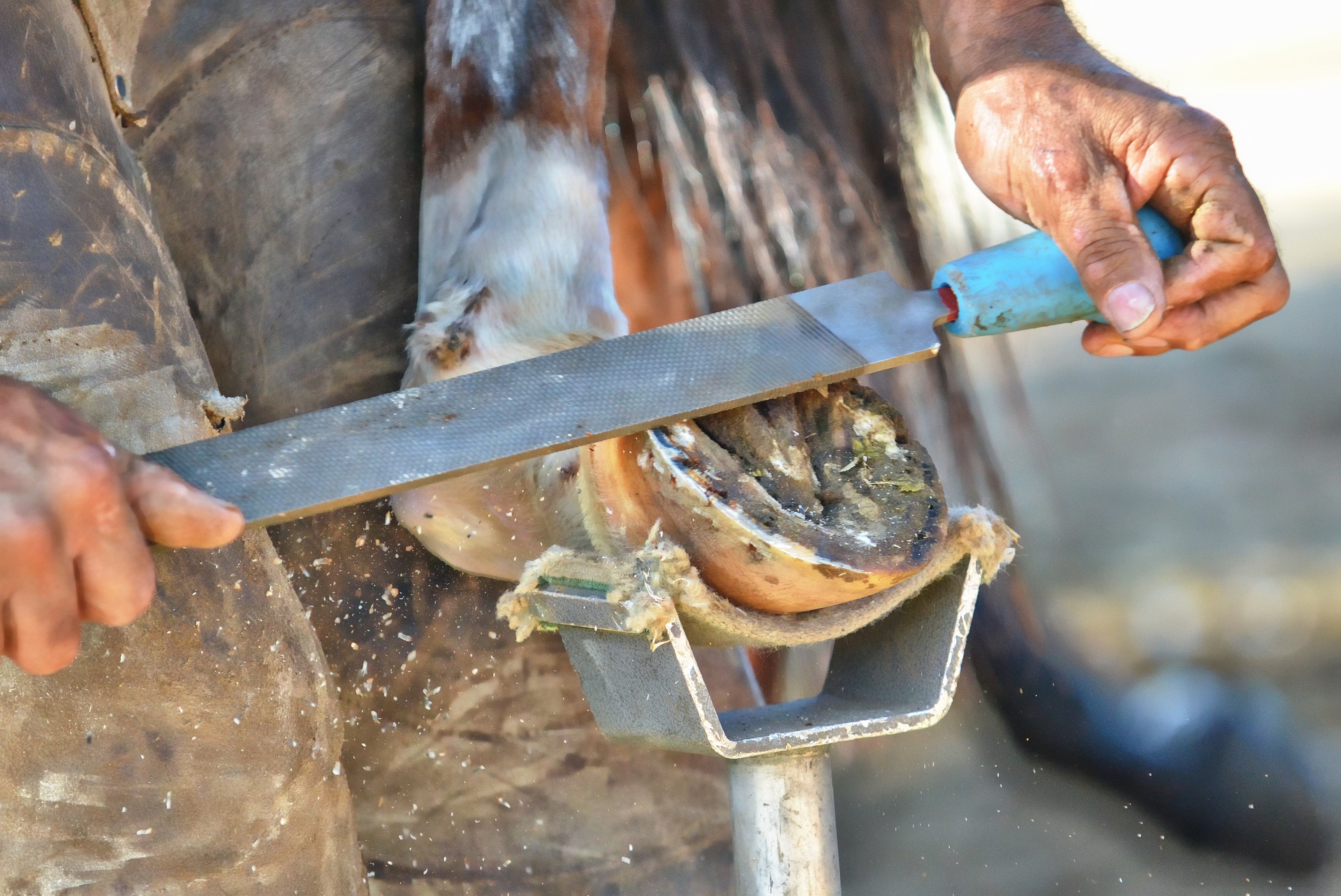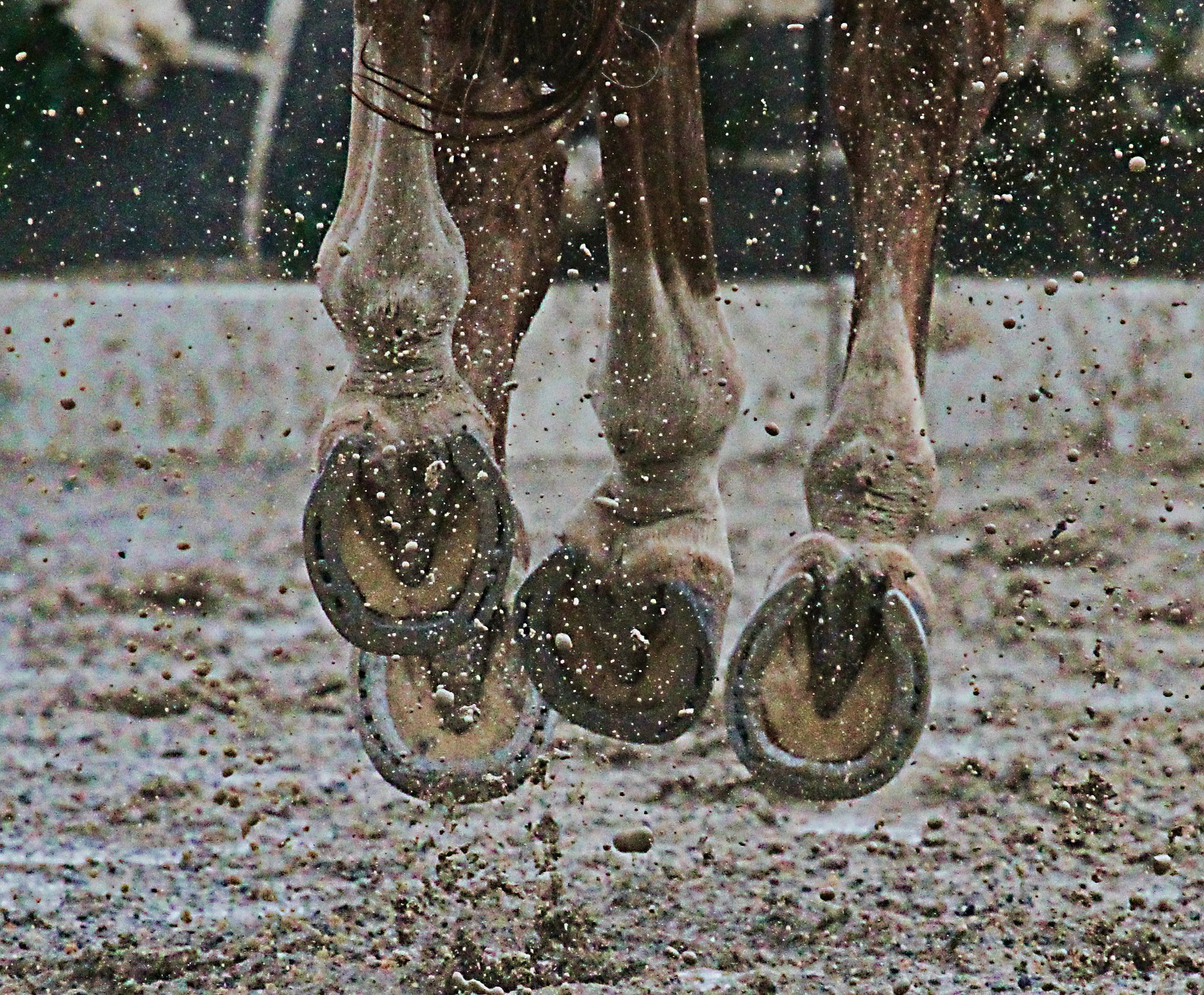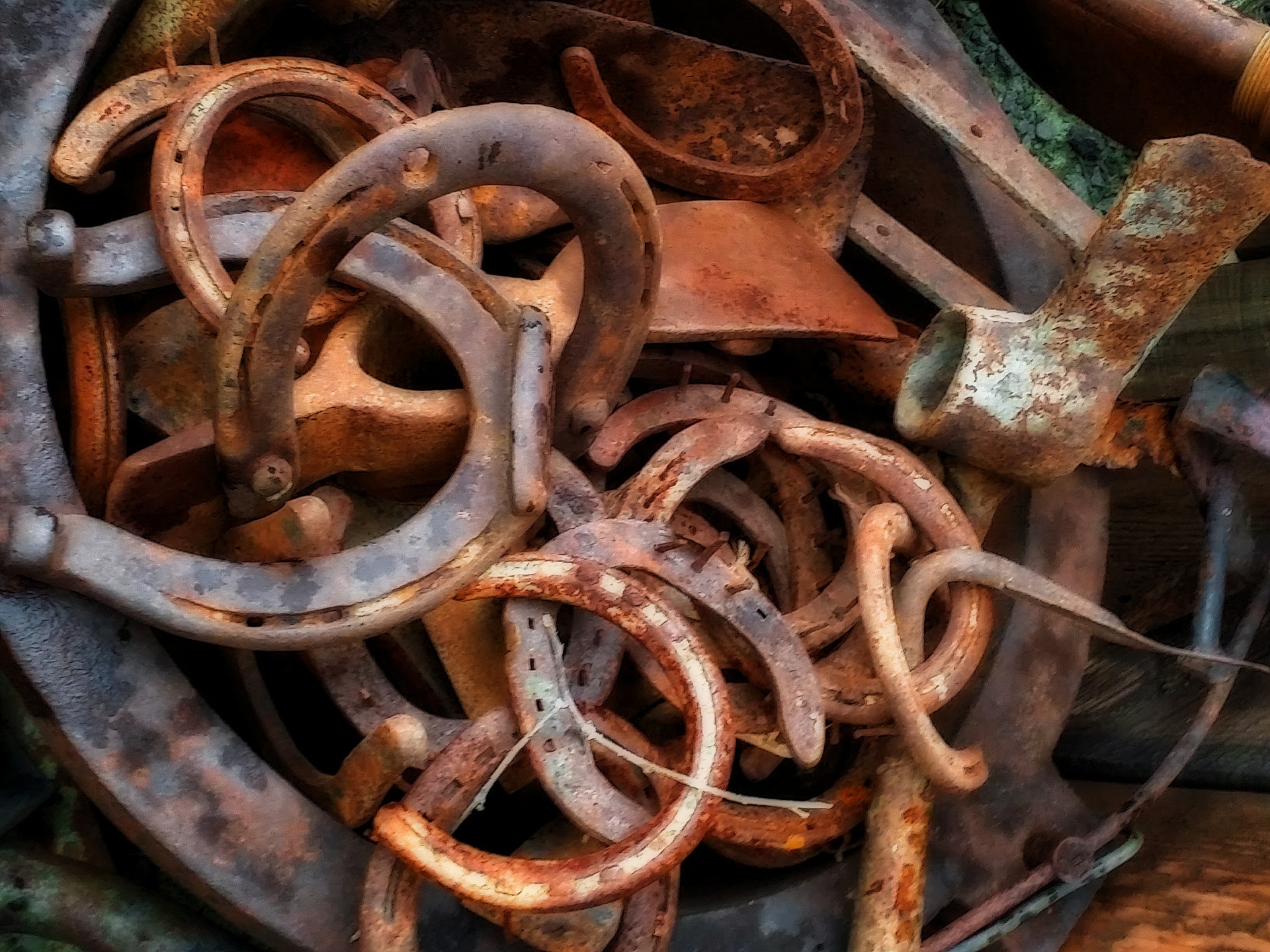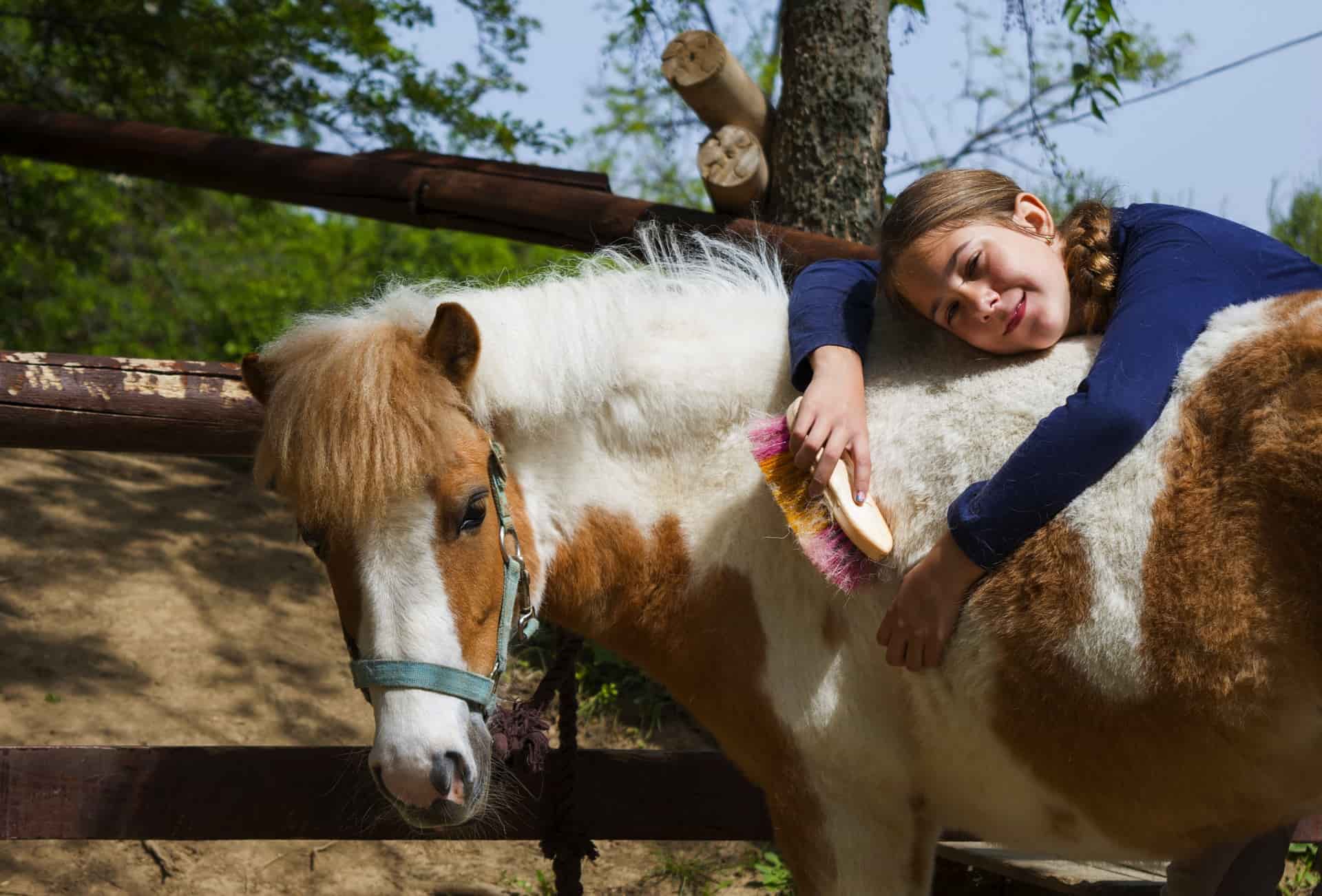If a horse wears shoes then at some point it's surely going to lose one. This is an inevitable problem that many horse owners will have to deal with one day. To keep hoof damage to a minimum, it's important to know how to correctly deal with a thrown shoe. In this guide, we’ll take a look at all the factors surrounding shoe loss, why it happens and what to do if your horse keeps losing shoes.
Why do Horses Lose Shoes?
There are many reasons why a horse might lose a shoe and knowing the cause can help you to prevent it from happening again in the future. Below are the most common reasons why a horse may throw a shoe.
Long Hooves
Horses need to have their shoes replaced every four to six weeks. In this time the nails will weaken, the shoe will wear down and the horse's hoof will grow. This means that the shoe will be less securely fitted and eventually it will fall off. Overdue shoeing is one of the main reasons for lost shoes. That's why it's important to maintain a regular shoeing schedule for your horse.
Poor Foot Conformation
If you find yourself dealing a lot with lost shoes then it could be an indicator that your horse has a conformation problem of the foot. If a horse has a thin or weak hoof wall then the nails will struggle to hold the shoe on to the hoof. A good farrier will be able to identify and help to treat conformation problems of the foot.
Over Striding
Sometimes a horse may overstride or overreach, which means that they can potentially catch a front shoe with the toe of their back foot. Horses will overstride due to conformation problems. Sudden changes in footing, going from hard to soft ground for example, can also cause your horse's gait to become imbalanced causing it to overreach. Bell boots are perfect for protecting the heels and the front shoes from an overreaching horse.
The Behavior of Horse and Rider
There are many odd and funny things that horses do. A horse with bad habits such as weaving can put extra pressure on their feet. Some horses are outright naughty and can manage to pull their shoes off. Poor riding habits can also cause a horse to become imbalanced and overstride.
Winter Mud and Summer Flies
Another common reason for a horse to lose a shoe is from the constant exposure to damp weather and wet conditions in the winter months. The hoof can become saturated and distorted in wet muddy conditions making it soft, spongy and unable to hold nails. The hot months also pose problems with horses stamping their feet repeatedly on hard earth because of the flies. Over time this constant foot stamping can loosen a shoe and cause it to fall off.
Potential Problems With a Pulled Shoe

A loose or pulled shoe can be a very dangerous object for a horse. As the shoe is being pulled off it can cause a lot of damage to the foot. It can pull away parts of the hoof wall and protruding nails can puncture the horse's sole. A lost shoe can potentially cause damage to other horses too. This is why it's important to always find the shoe and nails if they've been lost in the field, to prevent injury to the rest of the herd. If the shoe comes off with force then it can potentially scrape and cut the horses delicate legs too.
How to Tell When a Horse Needs Re-Shoeing
When it comes to lost shoes, then prevention is way better than cure. Identifying when a horse needs to be re-shoed can save the potential damage that comes with throwing one. As well as sticking to a regular shoeing schedule, you can assess your horse's feet regularly to make sure they're in optimum condition.
Some signs that the shoes need replacing are obvious such as a twisted shoe or one that looks like it's about to fall off. A loose shoe won't sound right either, it'll make a hollow clunking sound as it hits the ground. Horseshoes will need replacing if the clinches start to stick out of the hoof wall or if the heel of the hoof protrudes over the back of the shoe. If the nails underneath are so worn down that they merge with the shoe then this is also a sign that your horse needs a new set.
Tips and Advice For Dealing With a Lost Shoe
Tip 1
If the shoe is loose then you may be able to push it back on until your farrier arrives. In some cases, you may have to remove the shoe if you think it could potentially cause injury to the hoof wall or sole. Sometimes you can try to push the clinches back in with a hammer or nail clinchers, however, this should only be used as a temporary measure. It's always a good idea to have a few hoof tools such as a rasp or nail clinchers available in the barn.
The Tough 1 Nail Clincher is a great choice!
Tip 2
If you find your horse with a shoe missing then first you should evaluate the damage to the hoof. If there are punctures in the sole or severe wall damage then you may need to get veterinary attention for your horse. It's a good idea to check each leg and the other hooves too in case they've also been damaged by the shoe or a nail. Next, you should protect the foot until your farrier arrives. Protecting the foot will prevent further damage to the hoof meaning your farrier will have more hoof to work with. You can protect the hoof by wrapping it in cotton padding secured with vet wrap and duct tape.
Another alternative is using a Hoof Boot by Cavallo.
Tip 3
Don't ride a horse that has a shoe missing and be cautious about its turnout. Only allow your horse to exercise on soft, even ground. Turning it out in a rocky location could cause bruising to the sensitive sole. If you're in doubt then leave your horse in its stall until your farrier can come for a visit.
How to Prevent Horses From Throwing a Shoe
As an owner, there are many steps that you can take with your equine care routine to keep shoe loss to a minimum.
Regular Shoeing Schedule
If your horse wears shoes then you should make sure that you stick to the shoeing schedule that's been arranged between you and your farrier. The majority of farriers say that the most common cause of shoe loss is from overdue shoeing. You should also assess the shoes regularly in case they need replacing before their due date. Some riding activities can wear shoes down quicker. Working on hard ground like asphalt will wear the shoe down more than light work on soft ground for example.
Diet and Hoof Maintenance
It's a fact that horseshoes hold much better to healthy hooves. A healthy balanced diet and regular hoof maintenance play key roles in hoof quality. Clean your horse's feet regularly and avoid having them standing around in damp conditions for large amounts of time. For horses with particularly thin walls, you may like to add a supplement to their diet.
We recommend the Hoof Guard Concentrated Supplement with Biotin, Msm, Methionine & Zinc.
Over Reach Boots
Using overreach boots on the two front legs is one of the simplest ways to help prevent shoe loss. These rubber boots are also known as bell boots and they protect the horse's front feet, heels and shoes. They prevent the hind toes from pulling off the front shoe if they catch it with an overstride.
The Overreach Bell Boot by Professionals Choice is great!
Work With Your Farrier
If you have concerns about your horse's feet, never be afraid to ask for advice from your farrier, they're the experts after all. A farrier has all kinds of techniques to help keep your horse's shoes on. Often, the farrier may use more nails or use shoes with toe clips or side clips in place. In severe remedial cases, they may recommend using special glue instead of nails to join the shoe to the hoof.
Fly Defense
If your horse is particularly sensitive to flies in the summer months then you should consider using a horse fly spray, fly sheets, horse fly traps and/or fly boots to help keep your horse's shoes on. If a horse is constantly stomping with irritation from flies then this will loosen the shoes.
How Long Can a Horse Last Without a Shoe?

When a horse throws a shoe it will always cause an inconvenience, it means an extra farrier call out and potentially missing a show. In most cases, when a horse throws a shoe, it won't really be a medical emergency and as long as the foot is protected then the horse can be left for a few days without a shoe. Some owners like to give their horses a break from shoeing altogether. Letting a horse go barefoot when they're not working is thought to strengthen and condition their hooves.
Conclusion
If your horse keeps losing shoes then this may be highlighting an underlying health problem. In this case, you should seek advice from your farrier or veterinarian. You should always be prepared to deal with a loose shoe by having some basic hoof tools available, and a hoof boot for protecting a bare foot. This can prevent a lot of further damage to the horse's hoof. Common sense says that if you take care of your horse's feet and follow a regular shoeing schedule then your horse's shoes will have the best chances of staying on.








